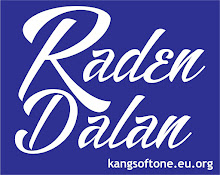Introduction:
The public sphere serves as a cornerstone of democratic societies, providing a space for citizens to engage in open dialogue, debate, and deliberation on matters of common concern. Rooted in the principles of freedom of expression and association, the public sphere fosters informed citizenship, political participation, and accountability.
1. Defining the Public Sphere
The concept of the public sphere was first articulated by German philosopher Jürgen Habermas in the 18th century. The public sphere encompasses various forums and platforms, including newspapers, coffeehouses, town hall meetings, social media, and public demonstrations.
2. Historical Origins
The emergence of the public sphere can be traced back to the Enlightenment period in Europe, when the rise of literacy, printing press, and coffeehouse culture facilitated the exchange of ideas and opinions among the educated elite.
3. Functions of the Public Sphere
The public sphere serves several key functions in democratic societies:
a. Information Exchange
It provides a forum for the dissemination and exchange of information, enabling citizens to stay informed about current events, government policies, and societal issues.
b. Deliberative Discourse
It facilitates reasoned debate and deliberation on matters of public concern, allowing citizens to weigh different perspectives, engage in critical thinking, and arrive at informed decisions.
c. Political Participation
It fosters political engagement and civic participation, empowering citizens to voice their opinions, advocate for their interests, and hold elected officials accountable.
d. Social Solidarity
It promotes social cohesion and solidarity by bringing diverse individuals and groups together to share experiences, values, and aspirations, fostering a sense of community and belonging.
4. Challenges and Controversies
Despite its idealized conception, these sphere faces several challenges and controversies in practice:
a. Media Fragmentation
The proliferation of digital media platforms and social networks has led to the fragmentation of these sphere, with individuals increasingly self-selecting into echo chambers and filter bubbles that reinforce their existing beliefs and biases.
b. Disinformation and Misinformation
The spread of false or misleading information online has undermined the credibility of traditional news media and eroded trust in democratic institutions, posing a threat to the integrity of public discourse.
c. Polarization and Partisanship
Political polarization and ideological divisions have fueled contentious debates and hostile rhetoric within these sphere, making it difficult to find common ground and reach consensus on pressing issues.
5. The Future of the Public Sphere
As digital technologies continue to reshape communication and media landscapes, the future of these sphere remains uncertain. Additionally, initiatives to diversify representation and amplify marginalized voices can enhance the inclusivity and effectiveness of public discourse.
6. Conclusion
The public sphere serves as a vital arena for democratic deliberation, enabling citizens to engage in informed dialogue, express their opinions, and shape collective decision-making. As we navigate the complexities of the digital age, it is essential to safeguard the integrity and inclusivity of these sphere, ensuring that it remains a vibrant forum for democratic participation and social change.
 KangSoftone Berita Informasi Terlengkap & Terbaru
KangSoftone Berita Informasi Terlengkap & Terbaru